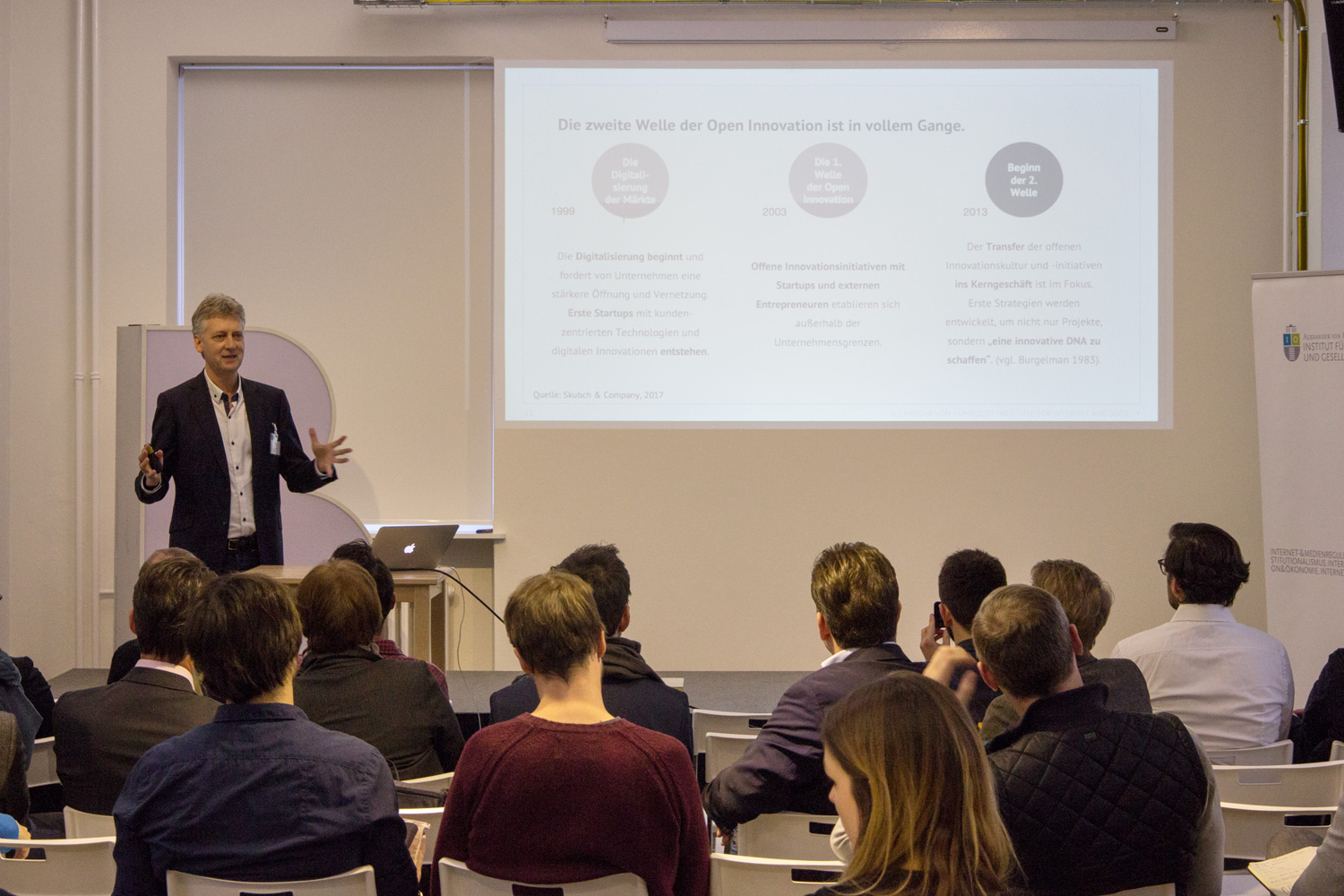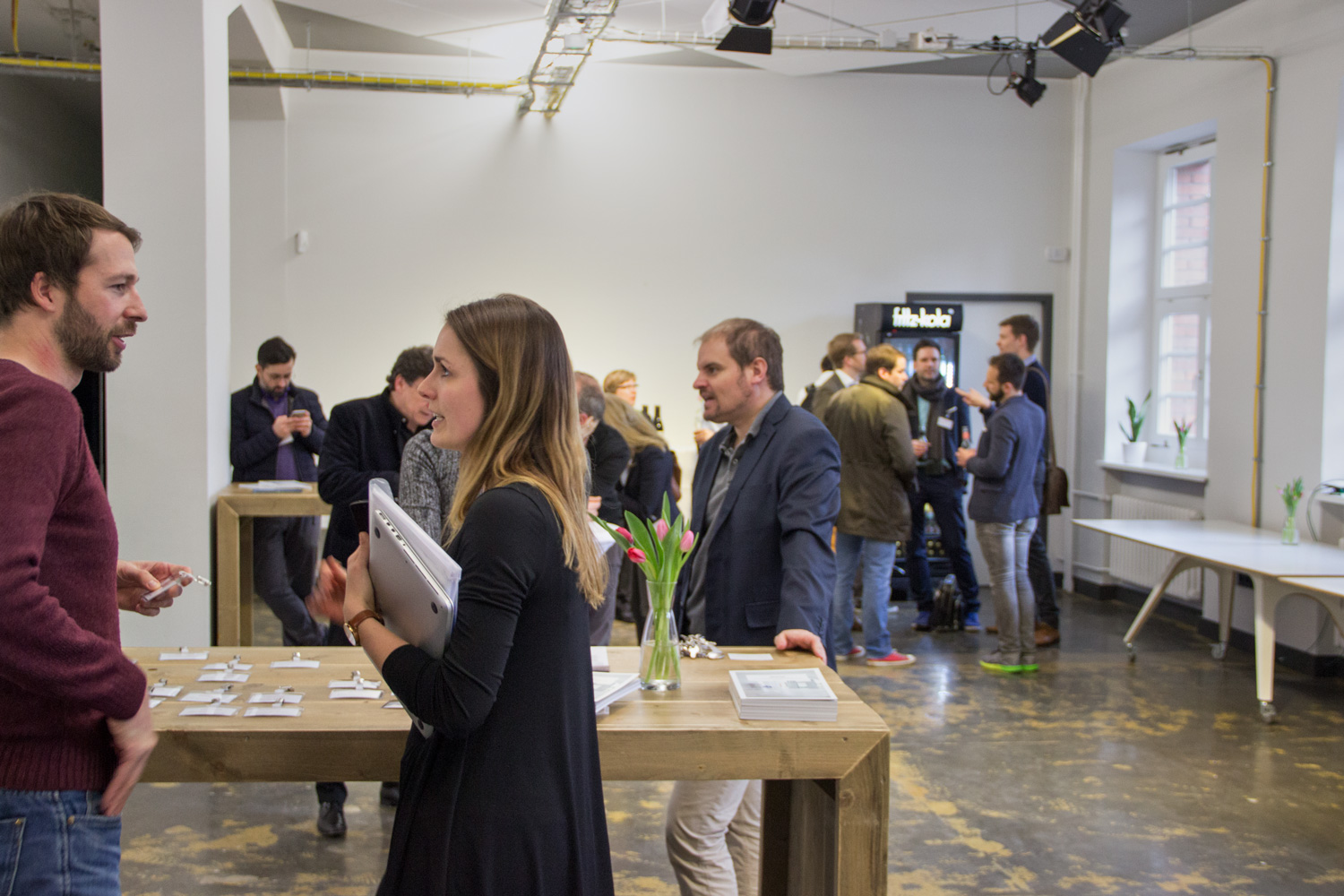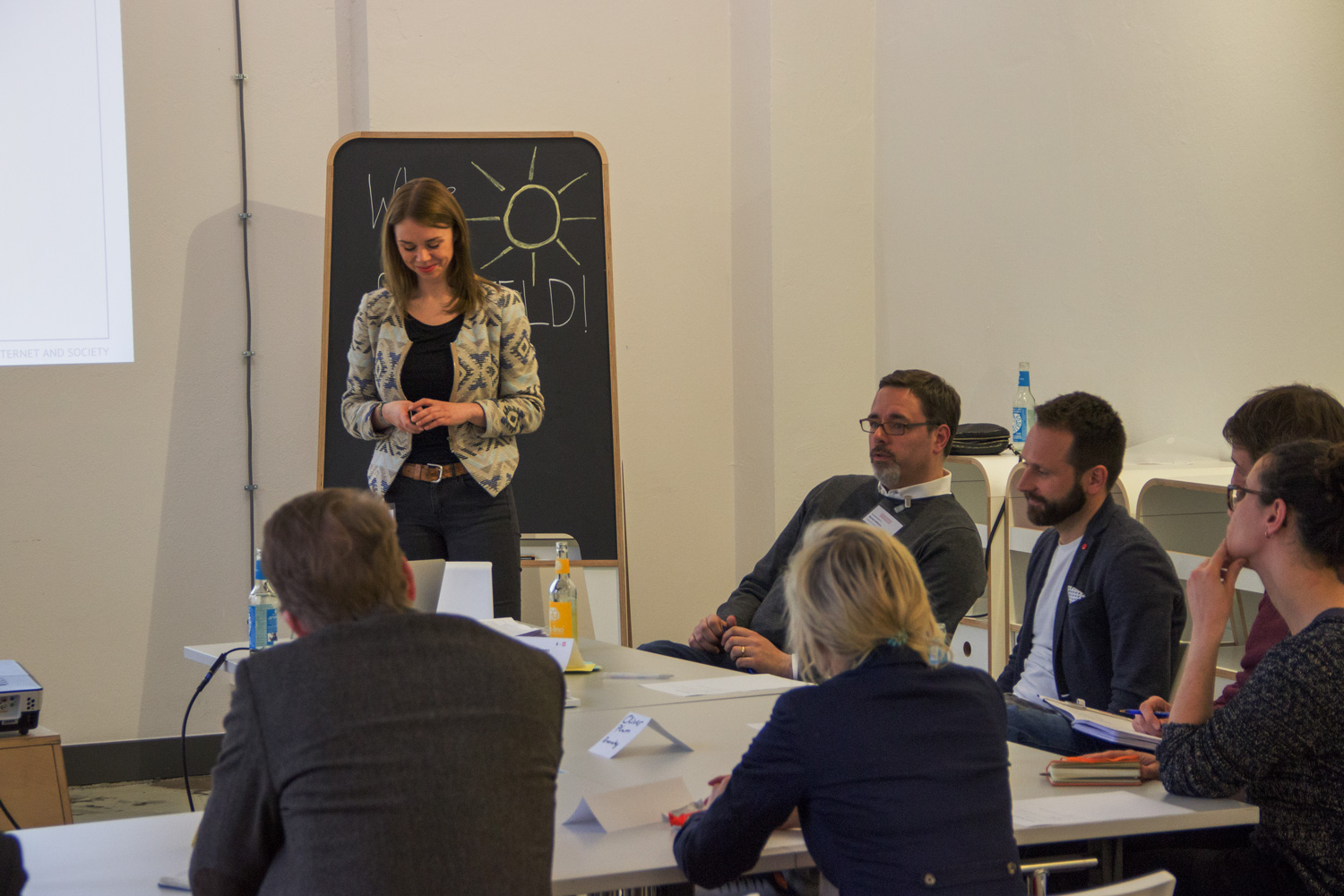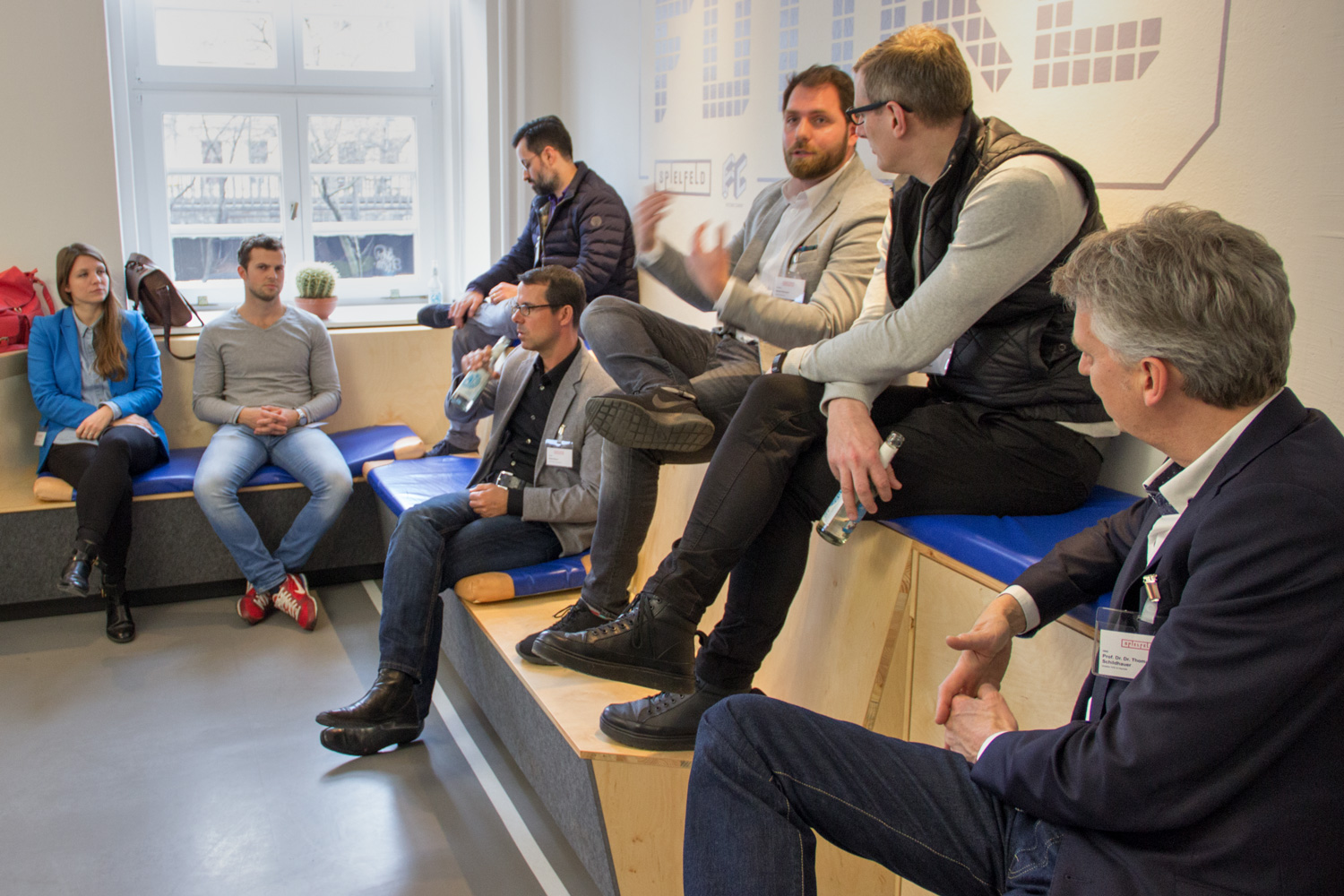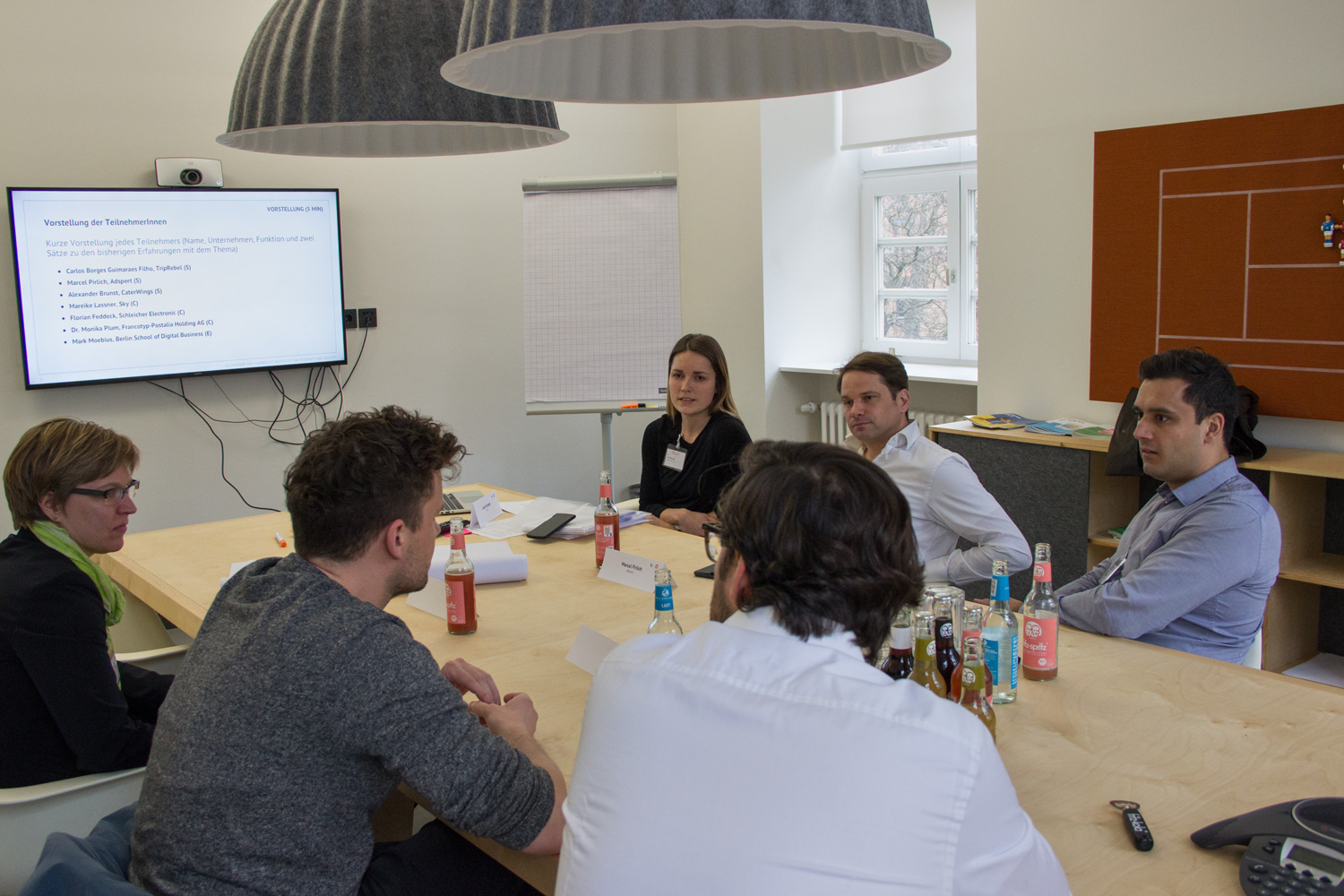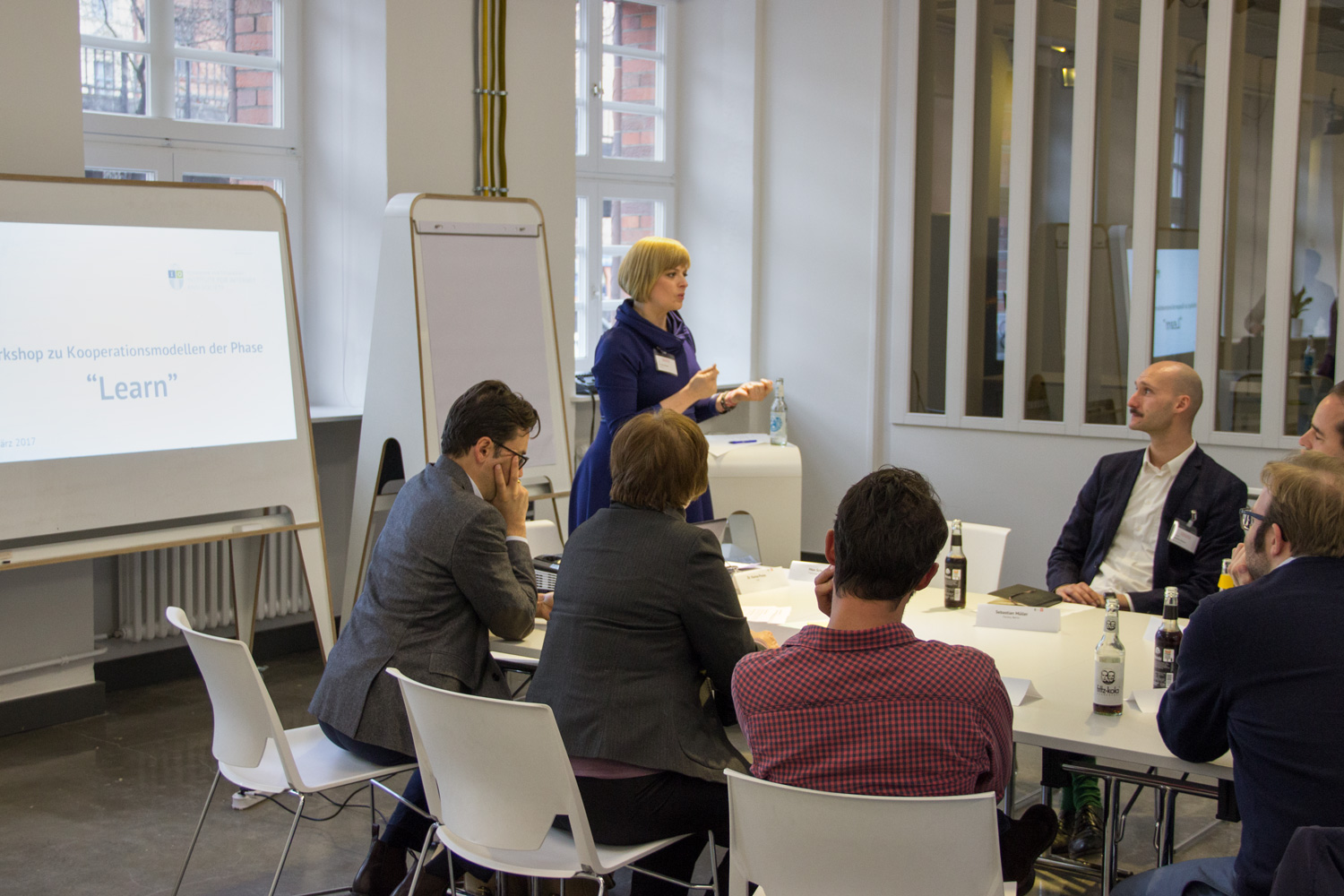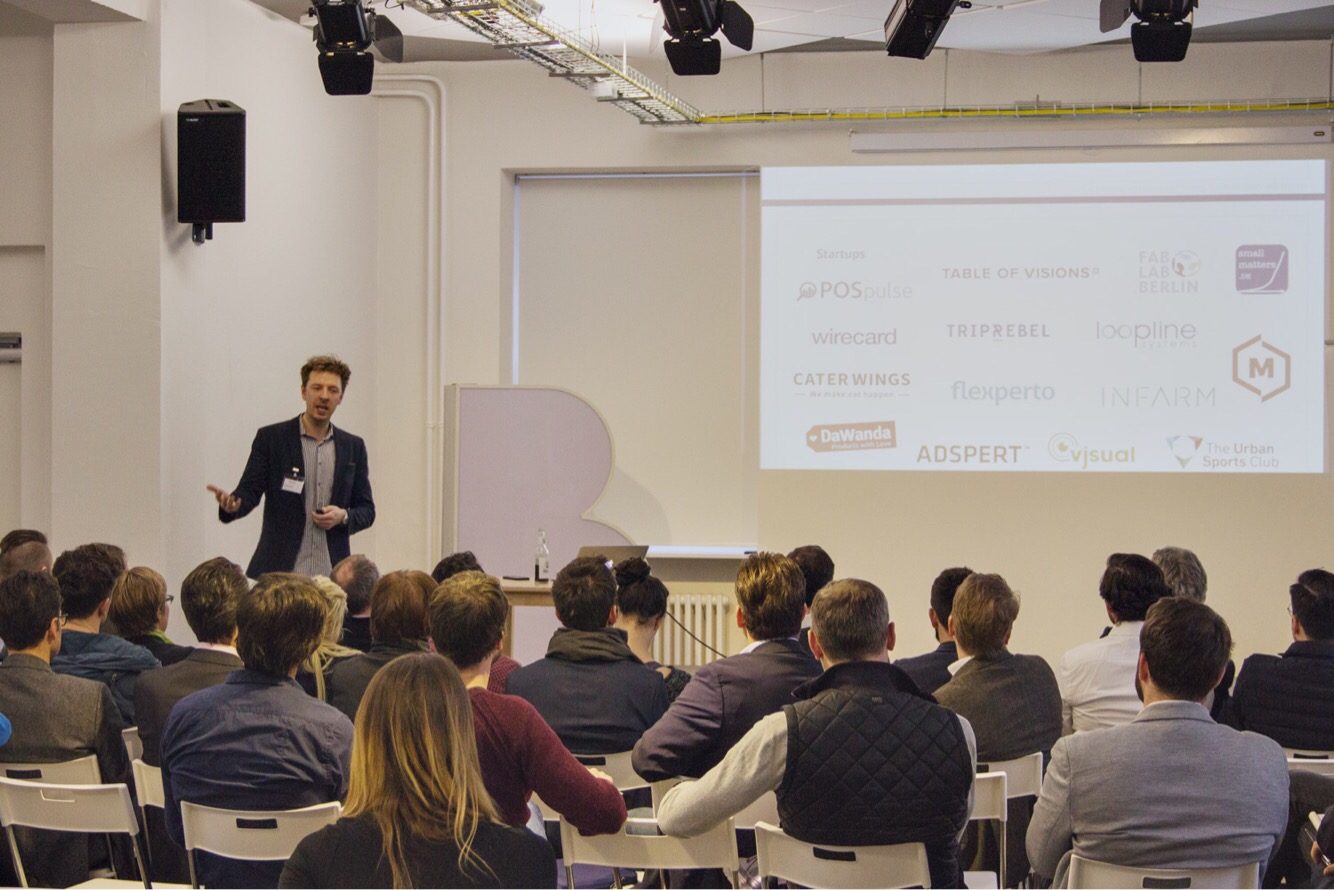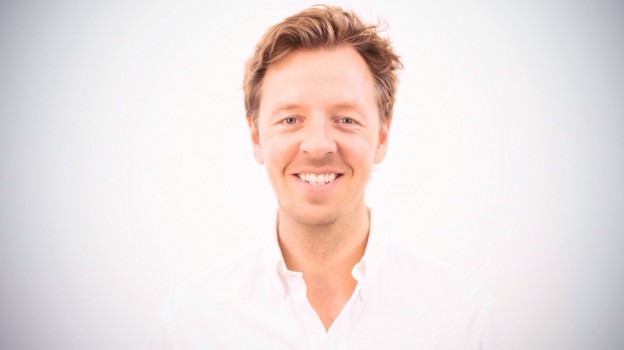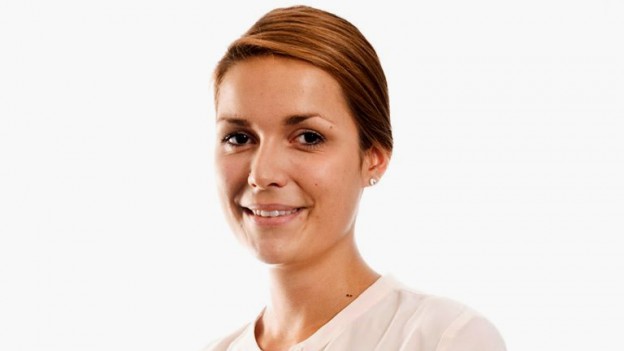Making sense of our connected world
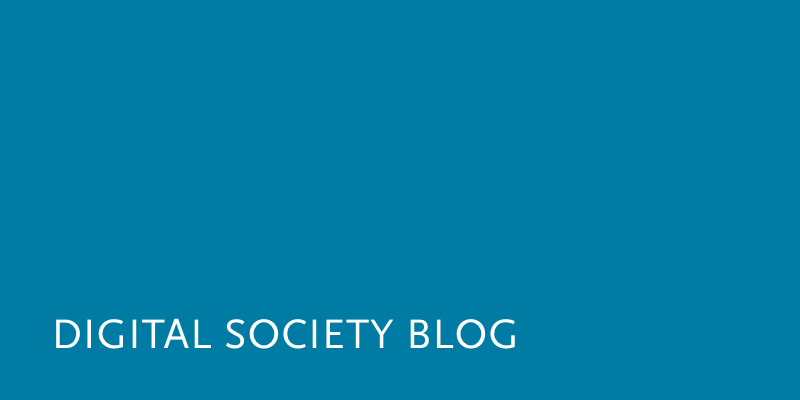
“Startups and mid-sized companies: It’s time to collaborate.”
How can mid-sized companies and startups arrange a successful cooperation with win-win potential for both sides? This question was raised on Monday, 6th March at Spielfeld Digital Hub. As a part of the one year study How to collaborate with Startups? the Alexander von Humboldt Institute for Internet and Society (HIIG) & Spielfeld hosted a large event with experts from both worlds regarding success models for efficient collaboration between startups and mid-sized companies.
Founders from startups such as Adspert, CaterWings, DaWanda, Fab Lab Berlin, Infarm, Loopline Systems, Makers, POSpulse, Table of Visions, TripRebel, Urban Sports Club or Vjsual met executives and managers from Brenntag, Sky, Commerzbank, Francotyp-Postalia, Gebr. Brassler, VR Leasing, Wirecard, German Association for Small and Medium-sized Businesses, WestTech Ventures as well as other experts from Berlin School of Digital Business, D-Labs, FactoryBerlin, Projects & smallmatters and Skubch&Company.
During four workshops the identified stages of collaboration – Learn, Match and Partner – were discussed in small groups.
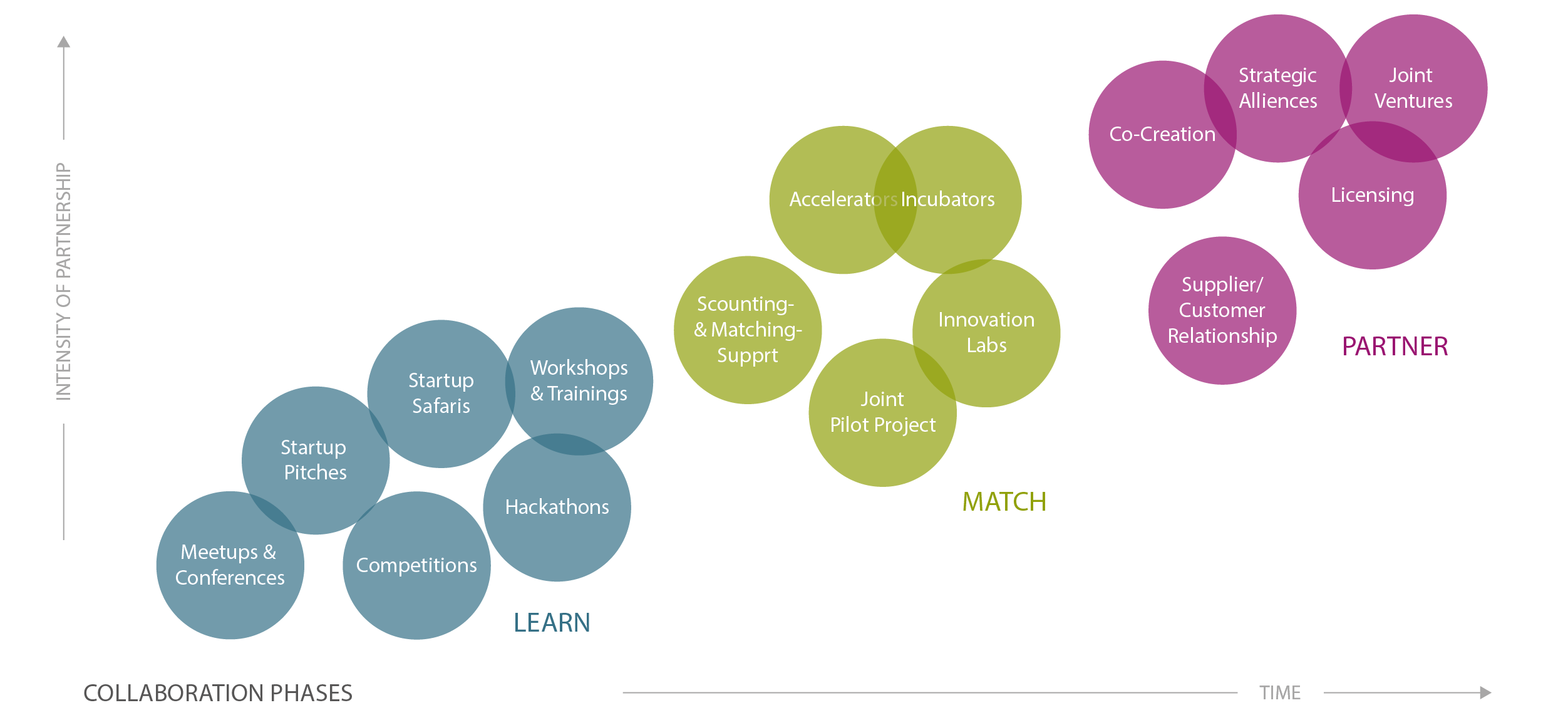
Figure: Framing of collaboration models: Learn, Match and Partner.
The Learn phase includes short-term models such as startup pitches, business plan competitions and hackathons. Match includes short-to-mid-term forms as accelerators or incubators whereas Partner combines long-term collaboration forms such as co-innovation, strategic alliances or joint ventures. Prof. Dr. Dr. Thomas Schildhauer (Research Director, HIIG), Moritz Diekmann (Managing Director, Telefónica NEXT) and Felix Anthonj (Founder, Flexperto) presented their experiences on open innovation within three keynotes. First results of our study will be published soon.
This is an article by Luise Springer and Martin Wrobel.
This post represents the view of the author and does not necessarily represent the view of the institute itself. For more information about the topics of these articles and associated research projects, please contact info@hiig.de.

You will receive our latest blog articles once a month in a newsletter.
Digital future of the workplace
The Human in the Loop in automated credit lending – Human expertise for greater fairness
How fair is automated credit lending? Where is human expertise essential?
Impactful by design: For digital entrepreneurs driven to create positive societal impact
How impact entrepreneurs can shape digital innovation to build technologies that create meaningful and lasting societal change.
Identifying bias, taking responsibility: Critical perspectives on AI and data quality in higher education
AI is changing higher education. This article explores the risks of bias and why we need a critical approach.
